Dry eye disease occurs when your eyes do not produce enough tears to lubricate the outer layers of your cornea or when they evaporate too quickly. This can lead to swelling, eye pain, and vision problems. Symptoms often include a stinging or burning feeling in the eyes.
The tear film that covers your eye surface can be affected by multiple factors, such as dry weather, smoking, poor hydration, or spending too much time looking at a computer screen.
Dry eye syndrome can also indicate autoimmune conditions, like diabetes and Graves’ or thyroid disease.
Treatment for dry eyes depends on the root cause of your condition. Once your eye specialist has identified the cause of your dry eyes, the treatment may range from lifestyle changes and eye drops to medication and in-office procedures, like teardrop plug insertion.
There are different types of dry eye disease:
Symptoms of dry eye syndrome often include:
These symptoms may affect one or both eyes.
Dry eye disease can happen due to external factors, or it can be a sign of a correlated illness. These include:
It’s important to visit your eye doctor if you notice any symptoms to promptly identify the root cause. Early treatment can help you avoid eye complications.
Your doctor will diagnose dry eye disease by checking how many tears your eyes produce, how long it takes them to dry up, and the general state of your corneas, retinas, and eyelids.
This is done through a comprehensive eye exam, which typically includes:
Dry eye treatment will depend on the underlying cause preventing your eyes from producing the right lubrication.
For mild dry eyes caused by environmental or lifestyle factors, there are multiple home remedies and changes to your routine that can help you soothe discomfort.
Eye drops can help with pain and discomfort caused by dry eye disease by moisturizing the outer layer of your cornea. A range of eye drops is available to treat dry eye disease, depending on its root cause.
These include over-the-counter artificial tears, thicker lubricants like night ointments, or prescription eye drops for more severe conditions.
Prescription medication to treat dry eyes includes:
For more severe cases of dry eye, your doctor could recommend removable teardrop plugs of silicone. These are inserted into the tear ducts, preventing tears from evaporating too quickly and stimulating their production.
For people whose dry eye disease is caused by an autoimmune disease, such as the meibomian gland dysfunction, there are multiple in-office procedures that can help soothe symptoms:
Contact lenses prescribed by your eye doctor can help soothe discomfort by lubricating the surface of your eyes. These are often available as:
Dry eyes can often be prevented by healthy habits and avoiding eye-irritating environments. These include:
EyesNY offers treatment to help patients treat dry eye discomfort or the underlying condition causing it. Our specialized team of ophthalmologists is ready to assess your needs and give you the high-quality vision care you deserve.
We work with cutting-edge technology to identify the root cause of your condition and create personalized treatment plans. Our caring staff is ready to welcome you and meet your ocular health and vision needs.
Our comprehensive eye care services include treatment for dry eye and all eye conditions or diseases.
If you’d like a consultation or more information, call us or request an appointment. You can also visit any of our clinic locations around New York, including Malta, Clifton Park, Troy, Saratoga Springs, and Queensbury.
Malta
658 Malta Ave., Ste 101
Malta, NY 12020
Phone: (518) 580-0553
Saratoga Springs
414 Maple Ave Ste 200
Saratoga Springs, NY 12866
Phone: (518) 580-0553
Clifton Park
1712 U.S. 9
Clifton Park, NY 12065
Phone: (518) 580-0553
Queensbury
535 Bay Road
Queensbury, NY 12804
Phone: (518) 580-0553
Troy
2200 Burdett Street Ste 206
Troy, NY 12180
Phone: (518) 580-0553
